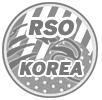Non-SOFA Vehicle On-base Registration
How to Get a Base Access Decal
As previously stated USFK authorizes retirees to obtain a vehicle decal for base access. The vehicle must be in the sponsors name - the retiree, not the dependent spouse. USFK Regulation 190-1 covers Non-SOFA vehicle registration. Click here to go to our Base Access page with a link to USFKR 190-1.
SOFA to Non-SOFA
If you retire from a SOFA status job in Korea with a SOFA registered vehicle and wish to keep the vehicle, you must have it inspected at Incheon, pass that inspection, and pay the tax on the vehicle from the time it was brought into Korea. It can be very expensive. Once you pass this inspection, and pay the tax, you still have to get it inspected at your local Korea Inspection Station before going to the local Korean DMV to register it.
Base Decal Requirements for Non-SOFA Vehicles
A retiree (not dependent spouse) living in Korea with a Korean registered vehicle can go to a Pass&ID office to obtain a base decal (barcode sticker) for base access for one (1) vehicle without an Exception To Policy (ETP). There is no requirement during this process to show or have the downtown Vehicle Safety Inspection certificate. The only requirements for a retiree to obtain a base decal (barcode sticker) are:
- Korean Vehicle Registration document
- Retiree ID Card
- Proof of Insurance
- Fill out a Pass&ID Request Form to Register
To initiate the vehicle registration process at the Pass&ID office on-base, you must visit the base's Visitor Center and inform them you are on your way to register the vehicle on base. They will give you a one-day pass FOR THAT SPECIFIC PURPOSE. An individual is not authorized to Escort their own vehicle on base, except for this purpose. Once registered, your one (1) authorized vehicle has base access. Attempting to escort your own vehicle, when you can actually register it, is a red flag to law enforcement you are trying to bring in a second car.
If you purchase a vehicle from another retiree the seller must de-register the vehicle and then do a transfer to the buyer. The buyer pays for registration fee, taxes, etc.
Bottom line HINT: it may not always be the best move to keep your previously SOFA status vehicle. Purchasing a vehicle after you retire could save money.
Registering a Previously SOFA Registered US Spec Vehicle Off-Base
U.S. spec cars that were brought to Korea via SOFA agreement do not have Korean Import taxes levied on them. So, if you wish to purchase and register such a vehicle under non-SOFA status, you must first "import" the car, which will require Korea inspection, import and custom fees, and then Korean taxes and registration fees. It can take a month or more to go through all this.
The following IS NOT an endorsement, just an example of a company someone has used to do all this - HB Motor Sports, cell phone 010-8703-0933, land line phone 031-905-0937 (phone numbers are from about 2014, so may have changed). Company's such as this will do all the work, you just have to pay; As an example several years ago, payment to this company to process a 2003 Ford Explorer that was imported into Korea in 2013 was about 1.2 million won, which allowed HB Motor Sports to the vehicle through all the import inspections. The import fees themselves were then another 1.4 million won, which at the time was 35% of the vehicles current value. Then to get the vehicle plated was another 300,000 won.
Bottom line: A U.S. car brought to Korea under SOFA is not cheap to take out of SOFA and register on the Korean economy. However, a Korean purchased vehicle, not SOFA registered, is pretty simple at DMV.







